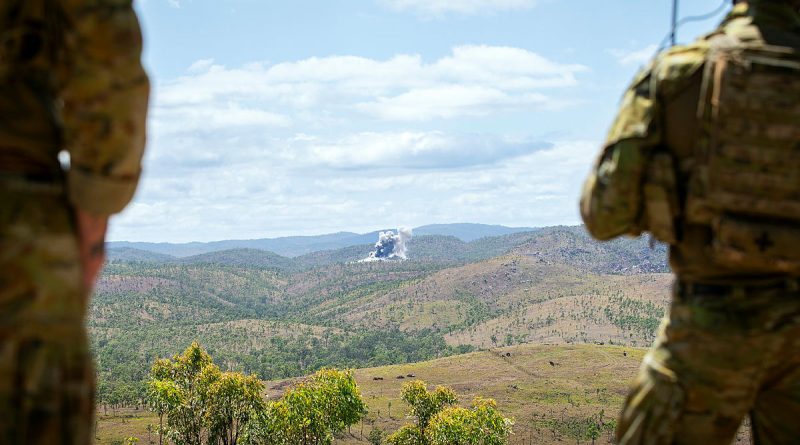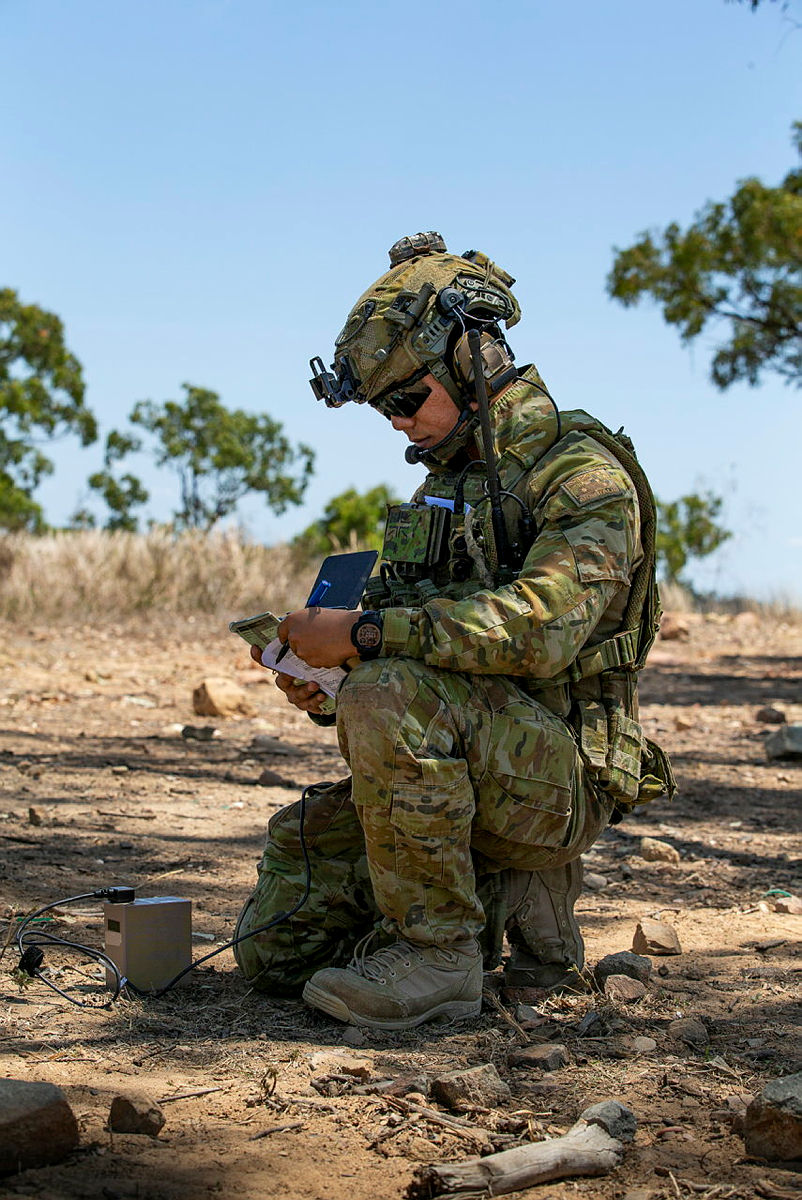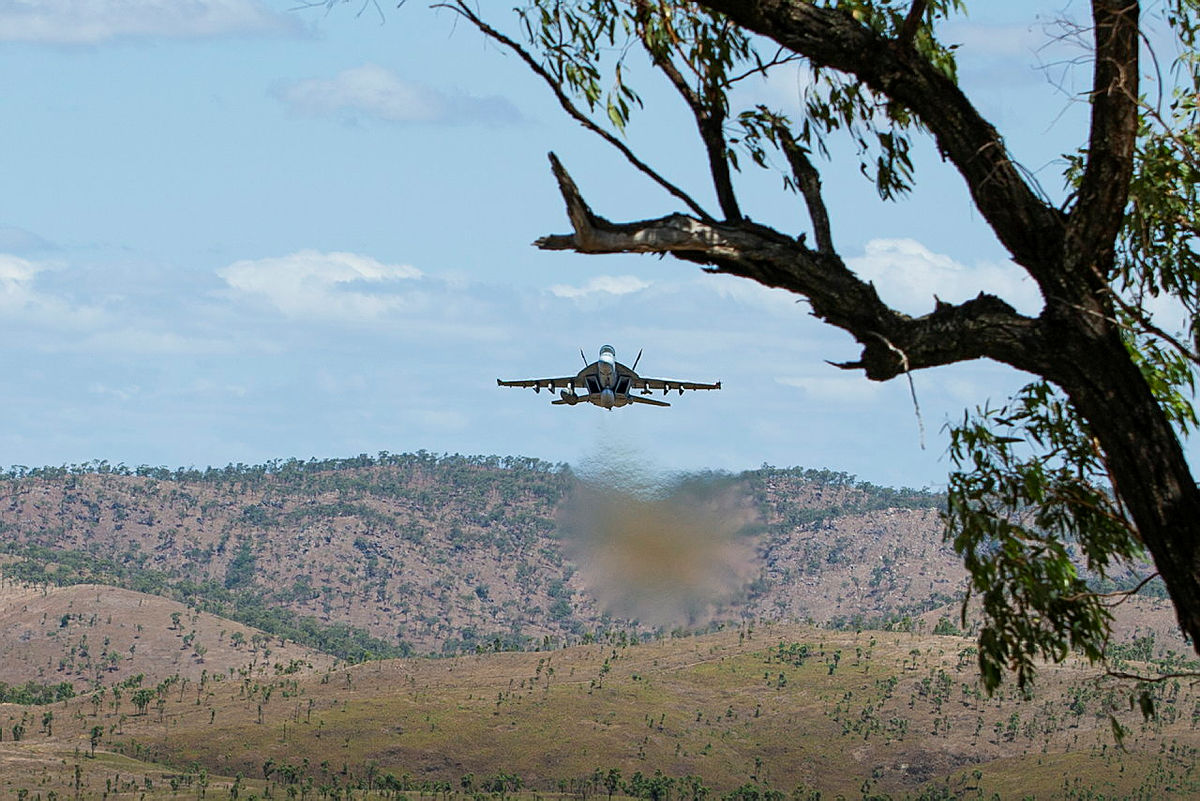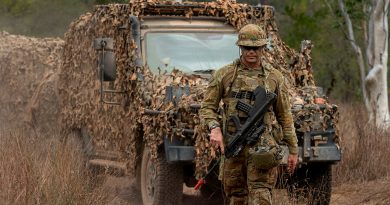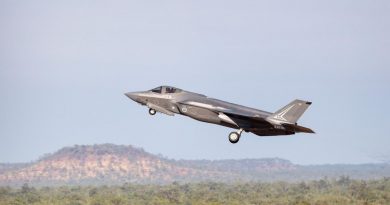Refining call-in of targeted attacks

A pair of F/A-18F Super Hornets roar overhead as a joint terminal attack controller (JTAC) on the ground radios through instructions for a strike.
CAPTION: Australian Army Joint Tactical Attack Controllers from 4th Regiment, Royal Australian Artillery observe round impacts during Exercise Nigrum Pugio with RAAF at Townsville Field Training Area, Townsville, Queensland. Story by Warrant Officer Class 2 Max Bree. Photos by Trooper Dana Millington.
He dictates target coordinates, the type of munition to drop and the aircraft’s approach direction.
“Canon 1, this is Dagger 112. Cleared hot,” he says.
The jet gets closer before its weapons systems officer comes over the radio.
“Canon 1, one away. 20 seconds. 10 seconds. Laser on,” he says.
A joint fires observer operating a laser designator radios through.
“Golf 11, lasing 1511,” he says.
An explosion from a 1000-pound, laser-guided bomb rocks a hillside several kilometres away.
“Golf 11, target is destroyed. One good impact,” the JFO says.
It was one of many such attacks called in during Exercise Nigrum Pugio, held at Townsville Field Training Area from October 16-23, a biannual event for 1 (Australian) Division and Forces Command JTACs.
JTACs must call in at least one live munition every six months as part of their recurring qualification controls, normally facilitated by Hawks dropping 25-pound training munitions.
But during Exercise Nigrum Pugio they controlled pairs of Super Hornets, each having a weapons load of 400 rounds of 20mm ammo, two GPS-guided 500-pounders, one laser-guided 500-pounder and a 1000-pound laser-guided munition.
JTACs coordinated engagements using methods including laser marking, GPS coordinates and video down link – where a controller sees a feed from the aircraft’s sensors.
Low-flying Hornets also unleashed streams of 20mm rounds bellowing a signature “BURRRRRRR” sound as they repeatedly strafed a nearby hill covered in mock vehicles.
One of those assessing the JTACs’ performance was Bombadier Matt Freegard, an evaluator from School of Artillery’s JTAC Troop.
“To have 1 Squadron here for three days, with full combat load out, is something that we don’t really do a lot. It just enables you to get better,” he said.
Most JTACs had what looked like a smartphone attached to their body armour, but these couldn’t be used to FaceTime mum.
CAPTION: Australian Army Joint Tactical Attack Controller Sergeant Aaron O’Blea prepares a fire mission.
They were part of a next gen digital terminal control system called APASS that sends target data to aircraft.
This reduces the amount of radio emissions, making it harder for enemies to locate a JTAC’s position.
The device plots enemies, friendlies, and does real-time tracking of call signs on the same net.
“Instead of using optics or your eyes to find a target, on there you have satellite imagery and different tools to measure distances. You might be able to more accurately plot a location,” Bombadier Freegard said.
Although APASS has the ability to provide a digital clearance, current doctrine requires JTAC’s to still clear using voice commands.
APASS already works for surface-to-surface fires. They are now refining procedures to use it for close air support.
1 (Australian) Division and Forces Command JTACs hold a qualification in addition to their role as artillery forward observers and Bombadier Freegard hoped to see more exercises like Nigrum Pugio to help sharpen skills.
“We can be such a great asset to Army and Air Force. We have the potential to train more JTACs and JFOs to a higher standard. We just need the ability to do these type of exercises more,” he said.
Bombadier Freegard’s proudest moment as a JTAC was calling in a simultaneous engagement of Hellfire missiles from Apaches and Tigers, but said controllers also provided an ISR function and enable air-land integration.
“Yes, an aircraft does have bombs but it also has sensors and we can use them to provide battlefield commentary, look at targetable areas of interest and then attack,” he said.
CAPTION: A RAAF F/A18A Hornet during Exercise Nigrum Pugio.
.
.

.
.

